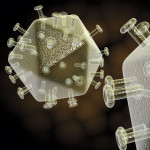Since the advent of effective combination antiretroviral (ARV) treatment for HIV in 1996, the proportion of those in care for the virus who have a fully suppressed viral load has about tripled, Reuters Health reports.
Publishing their findings in the Annals of Internal Medicine, researchers analyzed data on 31,930 people in care for HIV at eight sites in the Centers for AIDS Research Network of Integrated Clinical Systems.
In 1997, 32 percent of those in the database had fully suppressed HIV, defined in this study as a viral load of 400 or below. By 2015, that figure had increased to 86 percent.
Viral suppression rates were about 5 percent higher for each relative additional decade of age, 3 percent higher for men compared with women, 8 percent lower among Blacks compared with whites and about 6 percent lower among those who likely contracted HIV through injection drug use compared with men who likely contracted the virus through sex with another man.
After adjusting the data for various factors, the study authors found that each relative additional decade of age was associated with a 24 percent lower likelihood of having a viral load above 400. Using an integrase inhibitor–based regimen was associated with a 46 percent lower likelihood of having a viral load above 400, compared with using other types of ARVs. Compared with being white, being Black was associated with a 68 percent higher likelihood of having a viral load above 400.
To read the study abstract, click here.







Comments
Comments